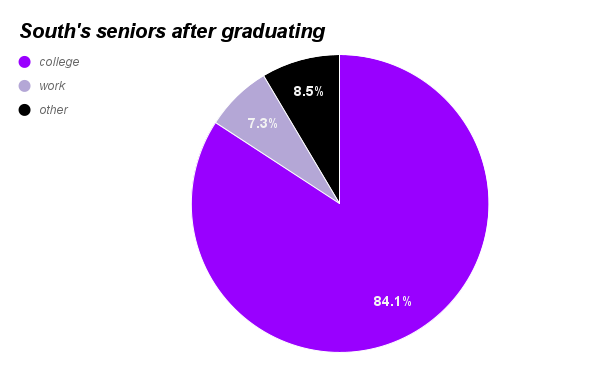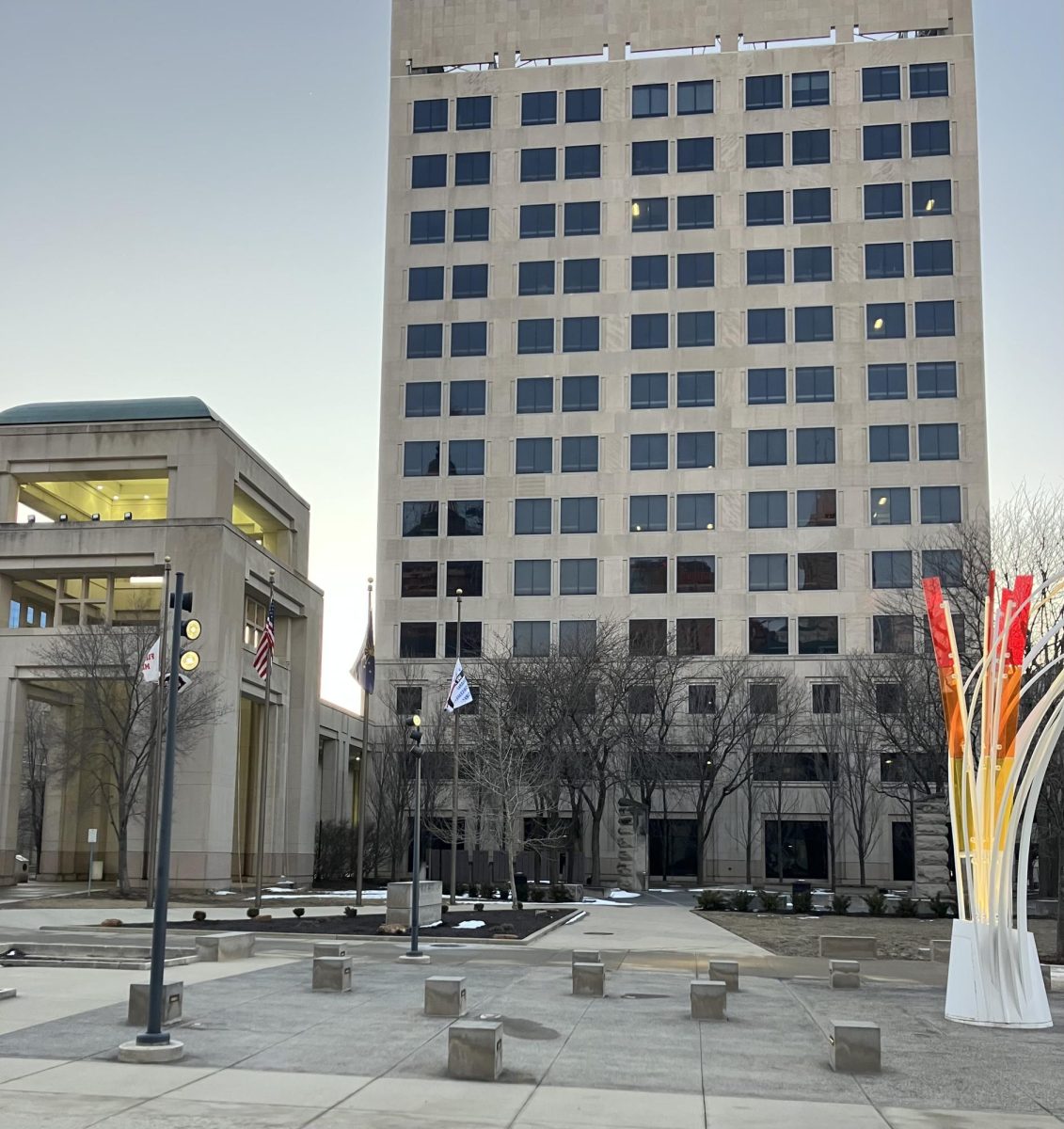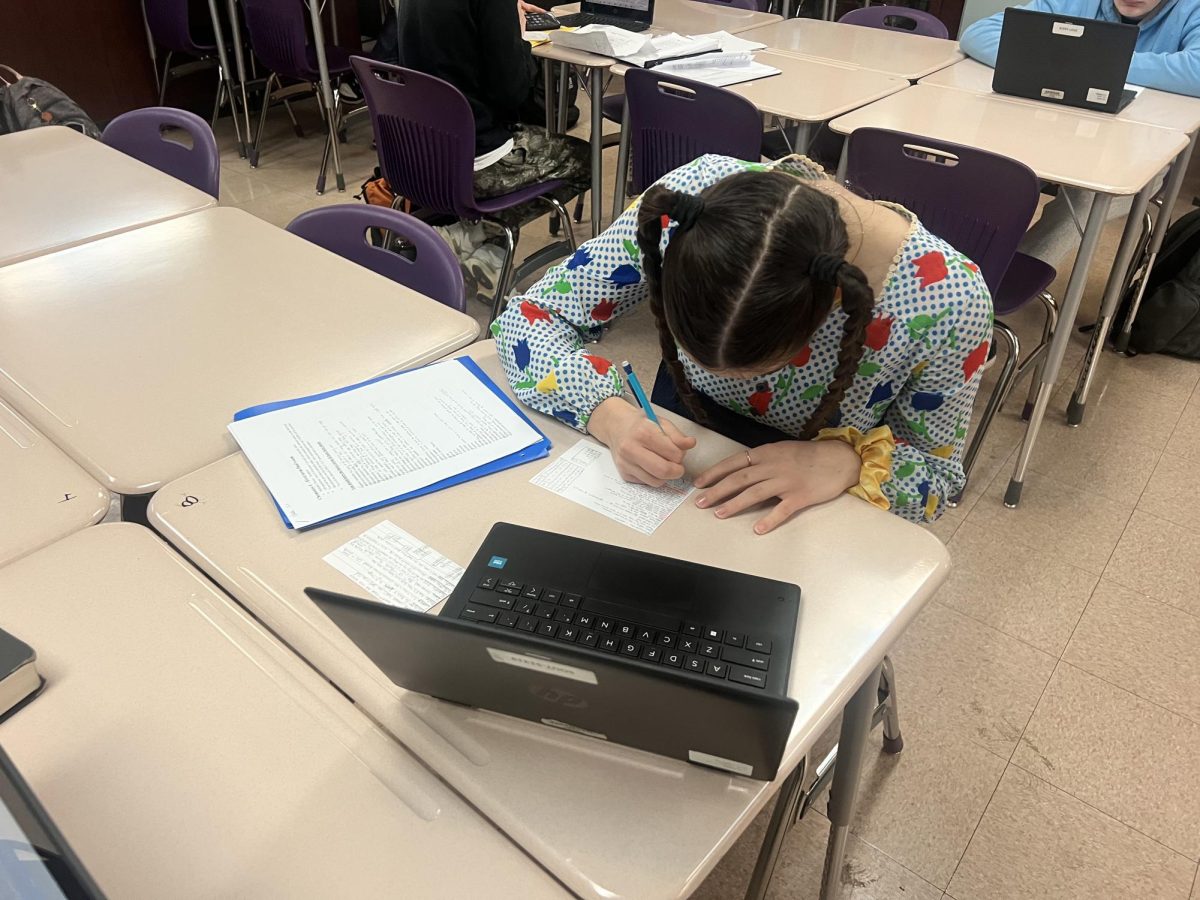The summertime heat in Bloomington can be miserable. It’s humid, it’s sunny, and sunburns are inevitable. So why do so many students come to Bloomington High School South wearing hoodies and sweatpants in the thick of the summer? The answer is simple: the school is too cold.
A quick walk through the halls is all it takes to experience the cold. Hoods are up and hands are in pockets. Looking around you might think it was late fall or even winter time. There are drafts in areas, some rooms are freezing, and if you show up to school in weather appropriate clothing you are bound to be cold.
It may feel cold, but how cold is it really? We decided to do our own research. We observed the temperature in different locations around South. We chose rooms based on popularity, along with trying to get a variety of floors and areas of the school with unique attributes, like having windows for example. We attempted to measure from the middle of every room and the center of the hallways. These temperatures ranged from 67.1 degrees to 72.5 degrees Fahrenheit with an average temperature of 70.9 degrees. Here is a list of rooms all in degrees Fahrenheit:
Pizzo’s Room: 72.3
Purple Gym: 71.2
Atrium: 67.1
White Gym: 70.3
Auditorium: 68.2
3rd floor hallway: 70.9
2nd floor hallway: 71.6
1st floor hallway: 70.9
Atrium 2nd floor: 72.3
Atrium 3rd floor: 72.5
Cafeteria: 71.2
Crowley’s Room: 72.3
Those are the statistics, but how do students feel about the temperatures? Seniors Sam Berensztein and Emma Shaw expressed their thoughts of the school climate. “Usually, I like to wear pants, a t-shirt, and a hoodie,” said Berensztein.
Shaw also said she covers up for school. “Usually [I wear] sweatpants or jeans, a long sleeve shirt, and a sweatshirt.” Both said that there have been times when the temperature has affected their learning. When asked what changes they would put in place, they both had similar ideas. “I would prefer it if the school was warmer,” said Shaw. “Bump it up one, maybe two degrees and it would be so much nicer already,” said Berenzstein.
Director of Building Automation & Indoor Air Quality Sam Gray said several factors are considered in picking the school temperature.
“I go with 72 as like the occupied cooling setpoint, and then 70 is the occupied heating setpoint, it’s in the middle of the road, you know, you go a little higher you start getting a lot of hot complaints, I want to make sure that everybody is comfortable.” Comfort is also key because it helps with performance. “If a teacher has an issue or concern about a temperature, they can always get a hold of Mr. Frye [South Custodial Supervisor] and give me a call, and I can always adjust it,” said Gray.
According to The Healthy Schools for Healthy Learning, classroom temperatures should be maintained between 68 degrees and 75 degrees Fahrenheit during the winter months and between 73 degrees and 79 degrees Fahrenheit during the summer months. The temperatures that we measured are all out of the summer range, but if the temperatures were raised a couple of degrees, they would be right in the middle. A study published on the same website recorded students’ test performances with the temperatures in their testing room. At 61 degrees Fahrenheit, students averaged a score of 76%, at 72 degrees Fahrenheit, students averaged a score of 90%, and at 81 degrees Fahrenheit, students averaged a score of 72%. The study concluded that when the students felt more comfortable, their test scores were better.
Not only would turning up the heat make students more comfortable and capable of learning, but it would also save the school a significant amount of money, especially during the summer. The cost of maintaining a temperature that is closer to the weather outside is cheaper, meaning a warmer school in the summer would save the school money that could be spent elsewhere. Saving energy is also better for the environment, because power the school uses comes from fossil fuels. Even a single school reducing its carbon footprint is important in fighting climate change. According to the website Direct Energy, The Department of Energy estimates savings of about 1 percent for each degree of thermostat adjustment per 8 hours, which could be significant with the size of the school’s energy bill.
Students think it’s too cold, statistics say it’s too cold, and a warmer school could save the corporation plenty of money. There are many aspects that we should assess and prioritize to see what is best for our school when it comes to the temperature. So let’s turn up the heat. What is there to lose?






Sam • Sep 22, 2022 at 7:56 am
Great content, great writing, and great quotes! I am truly inspired!
Student • Sep 21, 2022 at 7:16 pm
i agree. it’s too cold!